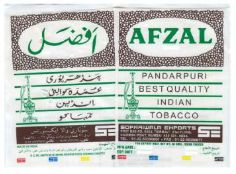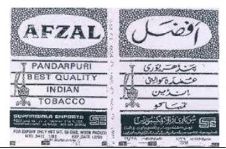In a recent judgment, the Delhi High Court has reiterated the approach in which trade marks must be evaluated, that is, from the perspective of the consumers. The Court identified the similarities between the marks and the ability of consumers to discern the trade marks of the proprietors by donning the role of a consumer having average intelligence and imperfect memory. The Court relied upon studies correlating memory, recollection, and perception in determining the possibility of likelihood of confusion.
Facts
Plaintiff 1 (Sopariwala Exports) is the registered proprietor of 


,

registration for the 
The suit was filed as a result of the sale of tobacco by the Defendant under the mark 
Observations and Findings
The claims of the Plaintiff were admitted on the principle of non-traverse, allowing for claims to be admitted if not denied as provided for under Order VIII Rule 5 of the Civil Code of Procedure. The Court considered the marks of the Plaintiffs and the Defendant that are given below and stated that prima facie the Defendant is liable for infringement and passing off due to the obvious phonetic similarity between the marks.
| PLAINTIFFS’ MARK | DEFENDANT’S MARK |
  |  |
The Court relied upon the observations made in the Pianotist Co. Ltd. case and stated that in addition to considerations of phonetic similarity, the consumers of the products must be evaluated. The Court stated that the perception of consumers towards trade marks must be seen as being of average intelligence and imperfect memory. The Court noted that tobacco is marketed towards lay people and analyzed the marks from the perspective of a lay person in deciding the likelihood of confusion. The Court stated that consumers must be perceived as seeing the marks one at a time and not as though they have the opportunity to see them side by side.
The Court held that if, upon viewing the Defendant’s mark, a consumer is likely to wonder whether he has seen the mark elsewhere, then the likelihood of confusion as explained under Section 29(2) of the Trade Marks Act stands satisfied. The Court inferred this by discussing the observations made in Shree Nath Heritage Liquor v. Allied Blenders, wherein various studies and articles relating to memory, recollection and perception were identified and discussed.
The Court also relied on the observation in Slazenger & Sons v. Feltham & Co., which states that the web of deception in potential trade mark infringement suits is not easy to discern and therefore, if one, despite trying to discern the source of a product fails to do so, a suit for infringement is made out. The Court reiterated the phonetic similarity between the marks and stated that the intention to deceive was unambiguous.
Judgment
The Court passed a decree of permanent injunction against the Defendant, restraining them from using the mark AFSALs or 







